This post is also available in: Italian
Summer is the best season for visiting mountain botanical gardens, full of little beautiful plants, capable of withstanding extreme environmental conditions, and also surrounded by wonderful landscapes. Compared to the traditional botanical gardens in the plains – most of them very old and built next to the most important universities (the first ones were that of Pisa, opened in 1543, and that of Padua, dating back to 1545), those on the mountains were all created in the XX century but one.
Featuring a much more modern design, almost all of them include the reconstruction of several natural environments typical of the mountain areas. Depending on the altitude, many of them are covered with snow, and therefore not open to the public for many months a year; the flowering season is between May and September, but the best time to admire as many flowers as possible is usually between June and July.
In the Aosta Valley, there are four high-altitude botanical gardens, which can be easily reached on foot: Paradisia, in Cogne (in the Gran Paradiso Park); Sassurea, at the Pavillon (above Courmayeur); Castel Savoia, in Gressoney-St. Jean; Chanousia, on the Little San Bernardo hill.
Paradisia Botanical Garden can be found in the heart of the Gran Paradiso National Park, at 5.577 ft above sea level: over some 2.5 acres there are a thousand species mostly belonging to the flora of the Italian Alps, including the rare Astragalus Alopecurus and Paradisea liliastrum (mostly growing in the pastures). It also offers a unique collection of lichens and some natural mountain environments, including a pseudo-steppe, the peat bog, a moraine, some limestone debris, and an unusual “mountain butterfly garden”.
Saussurea Alpine Botanical Garden, located at 7.135 ft above sea level, on the slopes of Mount Blanc, was named after Saussurea alpine, a rare plant from stony pastures dedicated to Horace Bènèdict de Saussure, the promoter of the first ascent to Mont Blanc in 1786. Local plants from Valle d’Aosta, as well as Western Alpine, North American, Spanish, Eurasian and medicinal plants are also collected in this garden.
Castel Savoia Alpine Botanical Garden can be found inside the park of Castel Savoia at an altitude of 4.4.30 ft: it belonged to Queen Margherita of Savoy, a true enthusiast of mountaineering. It is arranged in several rocky flower beds, reproducing the very alpine environment, with Italian botanical species, but also hybrids and cultivars from different parts of the world – mainly chosen for their striking ornamental look.
Chanousia Alpine Botanical Garden, located near the Italian-French border on the Little San Bernardo Hill, at 7.119 ft above sea level, is the oldest alpine botanical garden in Italy: it was established in 1897 by the local abbot Pierre Chanoux, a passionate naturalist who strongly advised tourists and climbers not to pick too many flowers from the mountains.
Destroyed during the Second World War, it was rebuilt only in 1976. Its symbol is the Campanula thyrsoides, which grows only in these areas and in this very botanical facility, together with many other species, including Primula hirsuta, Saxifraga biflora, Saxifraga oppositifolia, Ranunculus aquatilis, Achillea moschata, and Carex curvula.
In the valley, there is also another gem not to be missed: the interesting Experimental Garden of Medicinal Plants next to the Pharmacy of Dr Nicola, in Aosta: it’s used for researching natural remedies, phytocosmetic products and food supplements strictly obtained from local herbs and flowers, such as thyme and edelweiss grown for this very purpose in Val Ferret.
In Piedmont, at 3.937 ft above sea level (near the Sanctuary of Oropa), there’s the Botanical Garden of Oropa: located inside a WWF Oasis, it also includes a natural beech forest in the Special Natural Reserve of the Sacro Monte di Oropa. The garden mainly hosts native plant species, in particular from the Biella area and the Oropa Basin, together with a collection of alpine ornamental plants from all over the world (including a collection of Himalayan poppies, belonging to the Meconopsis genus).
In the upper Val Pellice (Colle Barant, in the municipality of Bobbio Pellice), there’s Bruno Peyronel Alpine Botanical Garden – dedicated to the native botanist and naturalist. It can be reached on foot in just an hour and a half, from the Barbara Refuge (Comba dei Carbonieri) and from the Jervis Refuge (Conca del Prà). This garden is rich in local alpine species and features natural mountain environments including pastures, lakeshores, and subalpine shrubs.
Valderia Botanical Garden is in Terme di Valdieri, in the upper Valle Gesso (province of Cuneo), at 4.593 ft above sea level. It was named after Viola valderia, discovered in this area in 1780 by the botanist Carlo Allioni. Today, the garden offers a comprehensive collection of the entire plant world from the Maritime Alps, with 500 species, divided into 14 different habitats (including a larch forest, the peat bog, limestone rocks, and mixed fir woods).
On the Piedmont hills of Lake Maggiore, in the hamlet of Alpino (between Stresa and Gignese), there’s the Alpinia Botanical Garden: established in 1934, when this area was still popular among European aristocrats and artists, it houses valuable botanical species from the alpine and subalpine planes, the Caucasus, China and Japan, including a rich aquatic flora. In less than an hour’s walk, visitors can reach Mount Mottarone, which overlooks the splendid panorama of the lake.
In Lombardy, at the top of Valcava (a breath-taking and uncontaminated gorge above Madesimo), there’s the Valcava Alpine Botanical Garden; it was recently built to protect the alpine flora, experiment with forage grass suitable for the meagre pastures, and study exotic forest species. This garden features ten different natural environments served by a thick network of footpaths.
In Alta Valtellina, within the Stelvio Park, there’s Rezia Alpine Botanical Garden, at 4.429 ft above sea level. It houses over 500 Alpine mountains from all over the world, divided according to their different features.
Inside the Stelvio National Park, this time in the part belonging to Trentino-Alto Adige, there’s also the botanical garden of Olga Casanova bio certified farm – in Val di Luce. In autumn it appears absolutely spectacular thanks to the eye-catching shades pf plants and trees. This garden is specialized in local herbs and plants, medicinal varieties included, thoroughly tagged for the visitors and used for herbal teas, lemon balm, and other natural products made with mint, cornflower, mallow, yarrow, currant, alpine grasshopper, and mountain asparagus. This garden is open to the public and can also be visited with guided tours.
On the Folgaria Plateau, in Rovereto (TN), at 5.249 ft above sea level, there’s the Alpine Botanical Garden of Passo Coe, which collects the spontaneous vegetation of Trentino, organized into wood, meadow, rocky and pasture areas.
About thirty minutes by car from Trento, at 4.921 ft above sea level, visitors can find Viote di Monte Bondone Alpine Botanical Garden, one of the oldest and largest in the Alps: established in 1938, it extends over 25 acres and hosts more than two thousand species belonging to the alpine vegetation, organized according to the different areas of origin – including many officinal and endangered species, whose seeds are collected and distributed to the international network of botanical gardens. Finally, visitors shouldn’t miss the highest rose garden in Europe: Rosarium Uhrerhof in Bulla, between Ortisei (Val Gardena) and Alpe di Siusi. Built at 5.249 ft above sea level, it was opened in 1812 by the Zemmer family: it hosts about 5000 roses, belonging to 150 different varieties, growing on the sloping ground next to Charme Hotel Uhrerhof. This garden should be visited between July and September when it’s in full bloom.
Veneto is the richest region in alpine botanical gardens: visitors should not miss that of Mount Baldo, near Verona, set within the Local Natural Park of Mount Baldo. It is spread over 5 acres, at about 3.937 ft above sea level, and hosts hundreds of native species, growing in specific micro-environments and ecosystems such as rocky areas, the beech undergrowth, pastures, meadows, and wetlands. Several wild orchids and endemic species survived on this mountain during the glaciations period, while they disappeared elsewhere, such as Campanula petraea, Primula spectabilis, Carex baldensis, and Phisoplexis comosa. The garden, which can be reached via a new route also suitable for lesser-able visitors, includes a refreshment shelter and an observatory.
The San Marco Alpine Botanical Garden, on the other hand, can be found in upper Val Leogra – in the municipality of Valli del Pasubio (province of Vicenza); the garden was built at some 9.842 ft above sea level and include a beech forest, a mountain meadow, a humid area and several rocky patches full of plant species coming from the neighbouring Small Venetian Dolomites and the Venetian Pre-Alps.
In the southern part of the Asiago Plateau, surrounded by pastures, spruce trees and rock formations, there’s the Alpine Botanical Garden of Mount Corno; it hosts over 350 herbaceous, shrub and tree species, belonging to subalpine and mountain flora – including a splendid specimen of common whitebeam (Sorbus aria).
In Pieve del Grappa (TV), namely on the southern slopes of Mount Grappa, there’s the Astego Vegetational Garden, built at only 1.476 ft above sea level; it features the natural environments found from the peaks of Venetian Pre-Alps to the plains and a spectacular labyrinth. There is also a rock garden, a fresh scree, a consolidated scree, a high altitude prairie, some beech woods, an olive grove, an oak grove, a plain wood and some crops. Many species of alpine and subalpine spontaneous flora can be found here, including ferns, saxifrages, gentians, primroses, rhododendrons, gentians, orchids, and wildflowers: an entire section is dedicated to cornflowers and poppies.
On Pre-Alps near Belluno, inside the Monte Faverghera Nature Reserve, there’s the Botanical Garden of the Eastern Alps, covering 15 acres, at 4.593-5.249 ft above sea level; a network of paths takes the visitors through the subalpine bushes, the marshes, the peat bogs, several pastures, screes, snow valleys, limestone and siliceous cliffs, discovering many fascinating plants, including alpine officinal species
Further on, there’s Antonio Segni Alpine Garden, featuring orchids, willows and ferns. The garden can be found at the foot of the Dolomite rock of the Civetta Mountain Group, near the Vazzoler refuge. The garden can be easily reached following one of many paths in the area (namely, the one connecting Listolade to Val Corpassa). In the garden there are typical environments of the local Dolomites; the vegetation gradually switches from spruce (Picea abies) and larch (Larix decidua) woods, to alpine meadow species, eventually tackling the scree at the foot of the vertical rock walls. There are many endemisms and valuable species, including Physoplexis comosa, Campanula carnica, Paederota bonarota, Potentilla nitida, Rhodothamnus chamaecistus, Saxifraga crustata, Lilium bulbiferum, and Lilium martagon.
Tambre, around Belluno and, namely, in Pian del Cansiglio, visitors can eventually enjoy the small but delightful Giangio Lorenzoni Alpine Botanical Garden, also known as the Cansiglio Alpine Botanical Garden. Built in a wonderful setting, it thoroughly collects ecosystem and botanical species found between 984 ft and the highest peaks. This garden also offers workshops and environment-themed activities for children.
This post is also available in: Italian



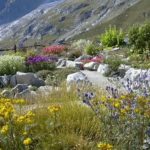
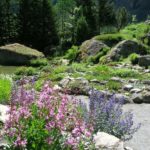
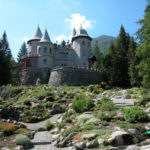
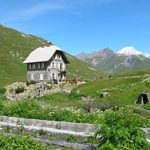
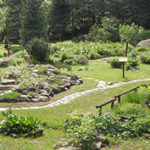

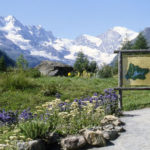
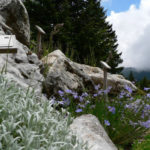
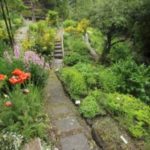
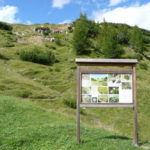
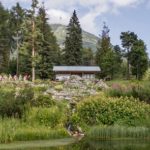
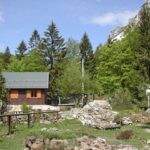
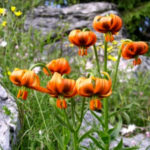
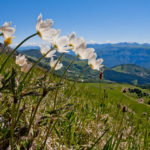
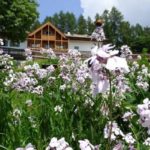
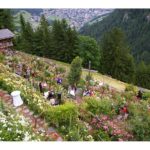
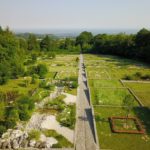
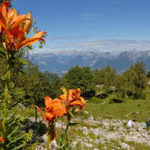
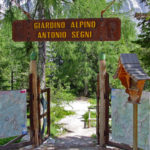
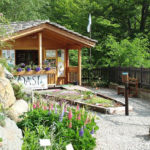
Leave a Reply